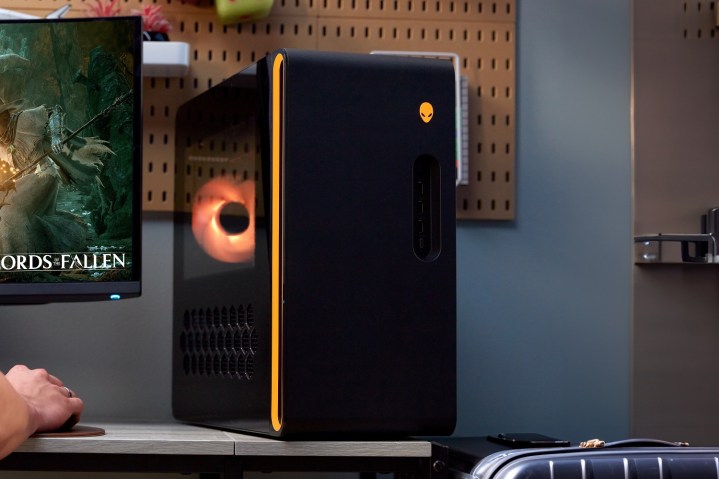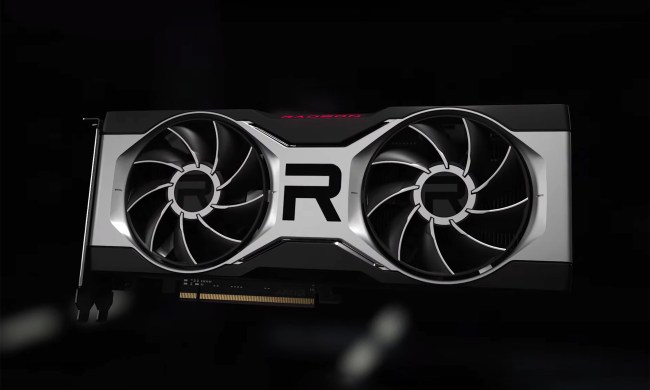
Alienware’s flagship gaming desktop is getting a serious makeover. The new Aurora R16, which is available to purchase now, ditches the angular, obtuse design of Alienware’s previous models in favor of a design that feels familiar yet — if you’ll excuse the pun — alien.
That’s clear by looking at an image of the redesigned Aurora R16 above. It’s a mid-tower box, much unlike a machine like the Aurora R15, with its massive footprint and large plastic covering that makes it feel much larger than it actually is. the Aurora R16 fits in much better now with the standard crop of gaming desktops, though it still has some unique design choices.

Overall, the case is around 40% smaller than the previous design, according to Alienware, but it maintains the same 25.2-liter volume. Alienware says it has further improved airflow, too, offering a 20% quieter system on average with up to 10% lower CPU and 6% lower GPU temperatures.
Air moves through the bright stadium lighting toward the front of the case, which Alienware says contributes to a 50% improvement in “open airflow ratio” compared to the R15. It’s not exactly clear what an “open airflow ratio” is, but it seems like the idea is that more air is allowed through the sides of the front panel. It moves through the case and is exhausted out of vents on the side panel, as well as a single rear exhaust.

Alienware is pulling a fast one with the side panel, though. All of the images we’ve seen on the Aurora R16 are with the clear side panel, but it’s worth pointing out that it comes with an opaque side panel with some configurations.
Inside the machine, Alienware has some strange configuration options. For the CPU, you have the choice between the Intel Core i9-12900F, Core i7-13700F, and Core i9-13900F. It’s the GPU choices that stand out. They’re all Nvidia, with the RTX 4070, RTX 4070 Ti, and RTX 4080 up for offer. It seems Alienware is also offering the machine with an RTX 3050, which is a bit strange, as well as bailing on the RTX 4090, which was available in the Aurora R15.

Thankfully, Alienware isn’t basing its pricing around the RTX 3050 configuration. The company tells me that the default configuration comes with a Core i7-13700F, 16GB of RAM, a 1TB SSD, a clear side panel, and an RTX 4070 for $1,750. That’s a massive price reduction compared to the Aurora R15, which costs $2,200 for the same configuration. That brings the machine more in-line with the specs it offers. For instance, the Lenovo Legion Tower 5i costs around $1,650 for similar specs.
In addition to the CPU and GPU options, Alienware offers up to 64GB of DDR5 memory, 8TB of SSD storage, and either a 500W or 1,000W 80 Plus Platinum power supply depending on your GPU. All models also come with Wi-Fi 6E along with a 2.5-Gigabit Ethernet connection.




